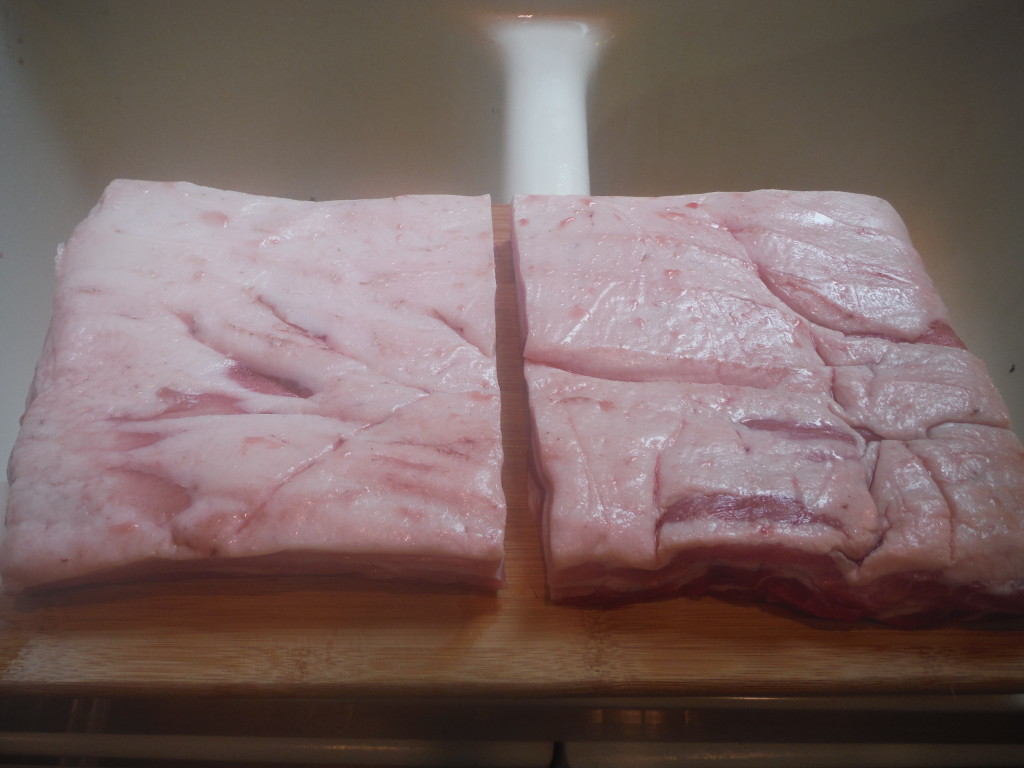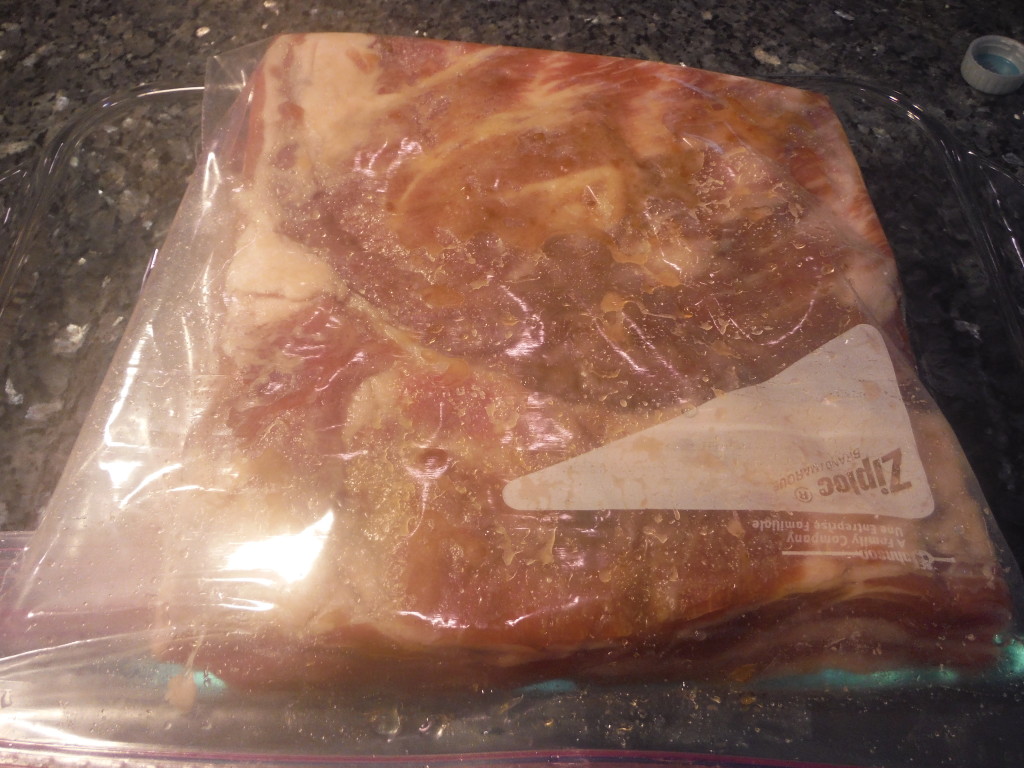Bacon is another example of a food which takes a lot of elapsed time (over a week) but very little work time. It is also essentially a very straightforward product, which in the past was something which a lot of ordinary farmers made as part of the annual rhythm of life. This particular posting is about making bacon in a very simple way using a pork belly, which is the part of the pig normally used for bacon in the US. In other parts of the world bacon is also made from other parts of the pig, and I have successfully made bacon from a Boston butt roast which I cut into 3 rectangular pieces. (At a later date I may have another posting on making bacon from these other parts.)
I made this using a very simple cure, which is for each pound of pork a mixture of 1 Tbs. of Morton Tender Cure curing salt and 1 tsp. of brown sugar.
The starting point was a 6 lb. pork belly from a heritage Irish pig which was part of a side of pork which I got as a Fathers’ Day present. I was pleased to see that they had trimmed away the skin, which saved me from a rather difficult task. (The skin needs to come off to allow the smoke and cure to penetrate better and since no one really wants to eat bacon which is hard on one edge.)
The first step was to cut the pork belly into two equal parts so that they will fit later into gallon-sized ziplock baggies.
Then each half pork belly is rubbed on both sides with one half of the cure, and each half is put into a ziplock baggie with the air squeezed out. The baggies are then laid flat in a lasagna pan (in case of drips) and placed in the refrigerator. At least once a day (and preferably twice a day), the two bags should be flipped. You should see a small amount of salty liquid building up in the baggies. This liquid helps with the curing process, so you want to leave it in the baggies.
After 7 days, the bellies should be cured, which can be tested by feeling that they now feel much firmer than they did before the cure.
The pork bellies should now be rinsed off, thoroughly dried with paper towels and then put on a rack in front of a fan for about 20 minutes. The objective is to have the surface of the bellies dry and tacky feeling so that the soot from the smoke will not collect on the bellies. While the pork bellies are drying, preheat the MasterBuilt electric box smoker to 180 degrees.
Put the bellies in the smoker separating them as much as possible so that the smoke will be able to flow well around them. Smoke for three hours. Remove from the smoker and let cool to room temperature. Then chill overnight in the refrigerator to help firm up the bacon, which will make the slicing easier. The next day, cutting across the grain, slice the new bacon into strips about 2 mm. thick. To make the bacon really last forever, I vacuum seal the bacon into one pound packages and store in the freezer any bacon beyond my immediate needs.
Note – If you do not have anything as controlled to work with as an electric box smoker with a thermostat (like the MasterBuilt smoker), you want to approximate the same thing with whatever you do have. On a typical barbeque grill, this will mean using indirect heat which is kept very low, although it does need to be hot enough that the wood chips you are using smolder properly. A remote temperature probe will be useful to ensure that the bacon does not get overcooked. An internal temperature of 160 degrees will be ample so that the meat is stable without being overdone.




